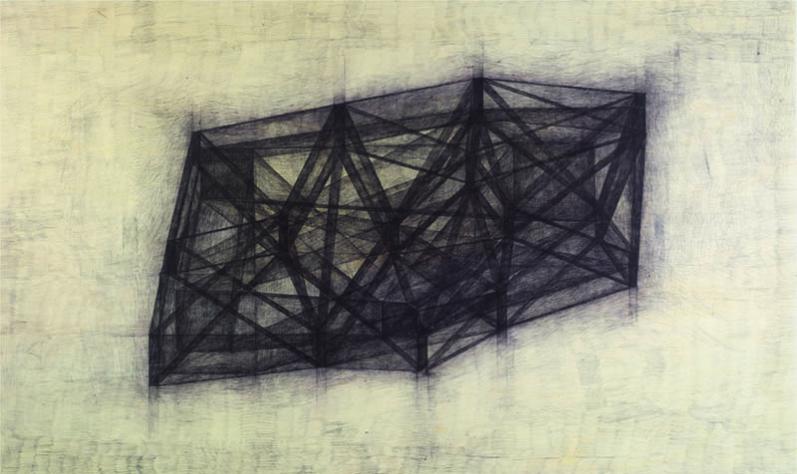
Since arriving in China through the residency program, Marbod Fritsch has continued to move his art forward –by looking back. Underpinning all these most recent paintings and drawings, as with all of Marbod’s work, is a strong conceptual basis. In his art, concept dictates form. Though Marbod is revisiting concepts from about a decade ago, he is exploring them in new media. Marbod explained his re-exploration as wanting to start in a safe place, in a country where he knew few people and did not speak the language. He noticed the indiscriminate copying which is prevalent in China.
It inspired him to “copy” his own work by having digital images of his works in wood and ballpoint pen printed on large canvases. From there, he painted over them, to make the copies “original” again. As he has been taken out of a familiar context, he wanted to do this in his work as well.
Marbod was inspired to work on canvas here because many painters in China take it as their primary medium. He has also been working on a series of smaller canvases, with similar geometric, gate-like structures centered in neutral fields. With the gate motifs, he invokes the universal nature of the principles of mathematics, especially the Golden Rule. Every culture has developed mathematics, giving geometry and mathematics a special power to transcend linguistic boundaries.
Also in the motif of the gate is explored the themes of open and closed spaces. Inspired by the ubiquity of doors and windows, Marbod explored the ways in which these portals can open a space or restrict access to it. In his work in the past, these gates have meant, as Marbod puts it, to “open space on flat surfaces.” These themes took on a personal dimension in China, when, during the first few weeks of his residency, Marbod’s father passed away.
This led to a series of five still unfinished canvases in which previously starkly defined gates appear to have melted away under atmospheric washes of white paint, blending in with the background to the point of nearly disappearing. For Marbod, this highlights the emptiness of death and the way in which a life can fade away. These works gave Marbod a chance to reflect on his father’s life, but these paintings also look towards the future of his art.